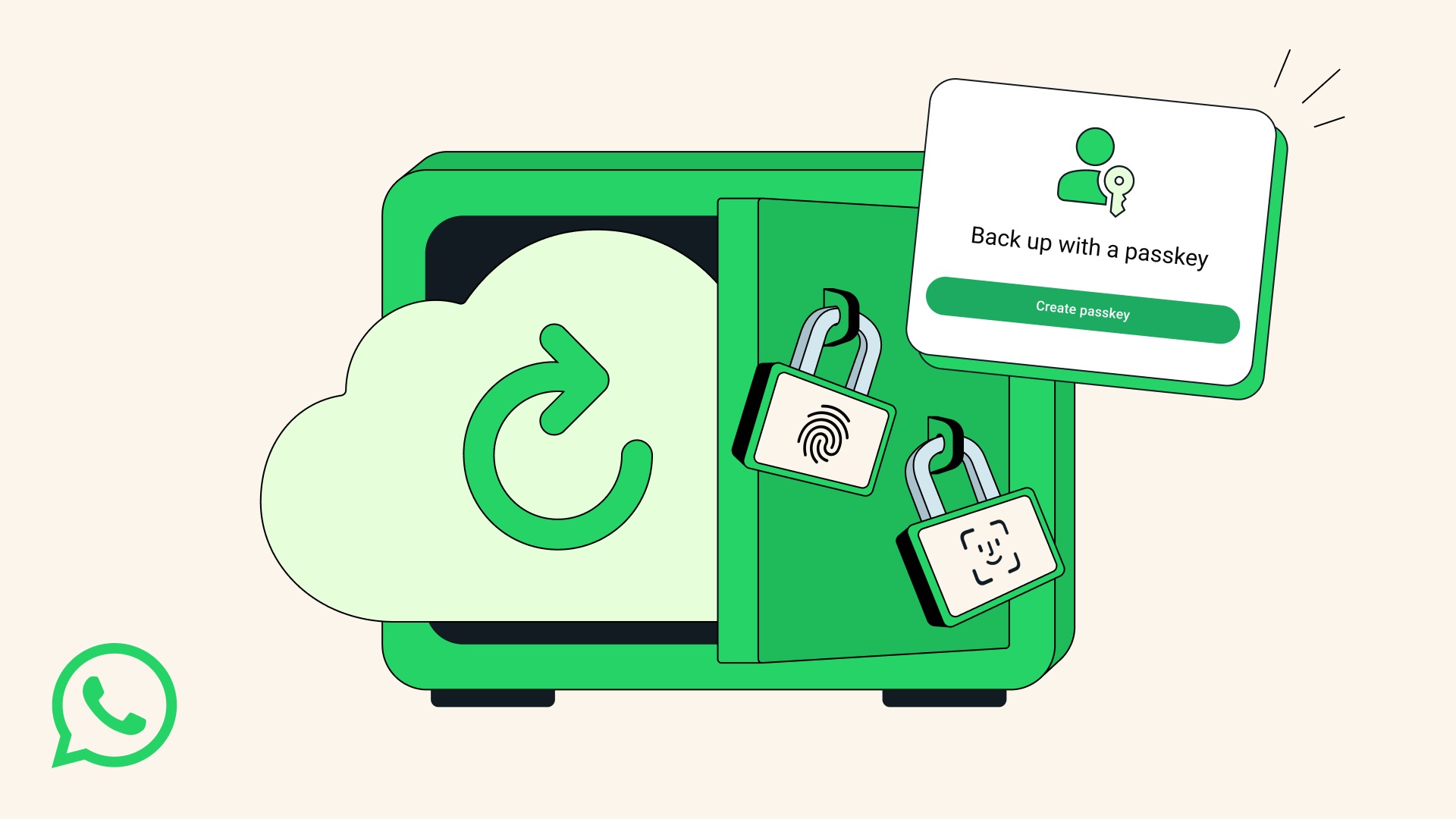
The global messaging giant, WhatsApp, is significantly enhancing the security framework for its users’ data by integrating passkey support for end-to-end encrypted cloud backups. This strategic move aims to simplify the process of accessing securely stored chat histories while simultaneously bolstering protection against unauthorized access. For the platform’s billions of users, this means a more streamlined and resilient method for restoring their digital conversations, leveraging modern authentication protocols like fingerprints, facial recognition, or device screen lock codes.
The Evolution of Digital Privacy on WhatsApp
WhatsApp, owned by Meta Platforms, has long positioned itself as a champion of user privacy, primarily through its pervasive implementation of end-to-end encryption (E2EE) for messages exchanged between individuals and within groups. This foundational technology ensures that only the sender and intended recipient can read the messages, preventing even WhatsApp itself from accessing the content. The journey to this robust security posture has been incremental, reflecting both technological advancements and growing user expectations for data protection.
Initially, WhatsApp introduced full end-to-end encryption for all calls and messages in April 2016, a landmark moment that solidified its privacy credentials. This integration, powered by the Signal Protocol, meant that all communications were secured by default, without users needing to opt-in. However, a significant gap persisted: while messages in transit were protected, backups stored in cloud services like Google Drive or Apple iCloud remained unencrypted, making them a potential vulnerability. If a user’s cloud account was compromised, their entire chat history could be exposed, circumventing WhatsApp’s E2EE.
Recognizing this critical oversight, WhatsApp took another pivotal step in 2021 by rolling out end-to-end encrypted backups. This feature allowed users to protect their cloud backups with either a password or a unique, 64-character encryption key. This provided a crucial layer of defense, ensuring that even if cloud providers were compelled to hand over data or if a user’s cloud account was breached, the backup content would remain unintelligible without the specific password or key. While a significant leap forward, this solution presented its own set of usability challenges.
The Challenge of Traditional Encryption Keys
The implementation of password or 64-character encryption keys for backups, while effective in principle, introduced a friction point for many users. Remembering a complex, unique password specifically for a WhatsApp backup, or diligently storing a lengthy, alphanumeric encryption key, proved to be an inconvenient hurdle. In the event of a lost or new device, users often found themselves struggling to recall or locate these crucial credentials, leading to frustration and, in some cases, irretrievable loss of chat histories. This trade-off between robust security and seamless user experience highlighted the need for a more intuitive solution.
Cybersecurity experts frequently emphasize that the most secure systems are often those that are also easy to use, as complexity can inadvertently lead to users adopting weaker security practices or disabling features altogether. The challenge with the initial encrypted backup system was precisely this: while offering strong protection, its reliance on memorized or physically stored keys created a barrier to widespread adoption and effective utilization, particularly during the stressful scenario of device recovery.
Embracing Passkeys: A New Paradigm for Authentication
The introduction of passkey support represents WhatsApp’s latest effort to bridge this gap, offering robust security without sacrificing convenience. Passkeys are a modern authentication standard developed by the FIDO Alliance, designed to replace traditional passwords with cryptographically secure, device-bound credentials. Instead of entering a password, users can authenticate using methods inherent to their device, such as a fingerprint scan, facial recognition, or a PIN/screen lock. This technology leverages public-key cryptography, where a unique pair of keys – a public key and a private key – is generated. The private key remains securely stored on the user’s device, while the public key is registered with the service (in this case, WhatsApp).
When a user attempts to access their encrypted backup, their device uses its biometric or PIN authentication to "sign" a challenge from WhatsApp using the private key. WhatsApp then verifies this signature using the public key it holds, confirming the user’s identity without ever transmitting the private key or a password. This process offers several advantages over conventional passwords:
- Phishing Resistance: Passkeys are inherently resistant to phishing attacks because they are tied to a specific website or application and cannot be tricked into authenticating on a fraudulent site.
- Simplicity: Users no longer need to remember complex passwords or lengthy encryption keys. Authentication becomes as simple as unlocking their device.
- Stronger Security: The underlying cryptography is more robust than many password-based systems, and the local authentication methods (biometrics, PIN) are generally more secure than typing a password, which can be vulnerable to keyloggers or shoulder surfing.
- Cross-Device Recovery: Critically for backup restoration, passkeys allow users to leverage their device’s built-in security features to unlock their encrypted backup, making the recovery process significantly smoother if their primary device is lost or upgraded.
This integration aligns WhatsApp with a broader industry trend towards passwordless authentication, championed by tech giants like Google, Apple, and Microsoft. The FIDO Alliance, a consortium of technology companies, has been instrumental in developing these standards to create a more secure and user-friendly internet.
Implementation and User Experience
For WhatsApp users, enabling this feature will be a straightforward process, though it requires an active choice. Users can navigate to Settings > Chats > Chat backup > End-to-end encrypted backup within the application. Here, they will find the option to enable encrypted backups, and subsequently, the choice to utilize passkeys for accessing these backups. This phased rollout will occur over the coming weeks and months, meaning availability may vary by region and individual user accounts.
The cultural impact of such a feature is significant. In an era where digital identity theft and data breaches are increasingly common, users are becoming more discerning about the security measures employed by the platforms they use daily. WhatsApp’s move to embrace passkeys not only addresses a technical vulnerability but also reinforces its commitment to user trust and privacy, which are paramount in the competitive landscape of messaging applications. This commitment can influence user loyalty and attract new users who prioritize robust data protection.
Market and Social Implications
The market for secure communication is highly competitive, with platforms like Signal and Telegram often highlighting their own privacy features. By continuously upgrading its security protocols, WhatsApp aims to maintain its dominant position and reassure its massive user base, which surpassed 3 billion active users in May. This move is not merely a technical upgrade; it’s a strategic imperative to differentiate itself in a market where privacy is a key selling point.
Socially, the increasing adoption of passkeys across major platforms signifies a broader shift in how individuals manage their digital lives. It signals a future where the burden of password management is significantly reduced, replaced by more intuitive and secure biometric or device-based authentication. This could lead to a reduction in common security vulnerabilities stemming from weak, reused, or easily phished passwords, thereby improving overall digital hygiene for a vast segment of the global population.
Moreover, the integration of passkeys for backups underscores the importance of "data at rest" security. While end-to-end encryption has largely solved the problem of securing data "in transit," ensuring the integrity and confidentiality of data stored on cloud servers or local devices remains a continuous challenge. WhatsApp’s approach provides a robust solution to this, offering users peace of mind that their most personal digital interactions are protected throughout their lifecycle, from creation to storage and restoration.
Analytical Commentary: Balancing Act and Future Outlook
From an analytical perspective, WhatsApp’s adoption of passkeys for encrypted backups represents a well-calculated move. It intelligently addresses a long-standing usability issue associated with strong encryption, which often comes at the cost of convenience. By leveraging existing device authentication mechanisms, WhatsApp democratizes access to advanced security, making it accessible even to less tech-savvy users.
However, challenges remain. User education will be crucial to ensure widespread adoption. Many users may not fully understand the implications of passkeys or the benefits over traditional passwords. Clear, concise in-app guidance will be essential to guide users through the activation process and explain the advantages. Furthermore, the reliance on device-specific authentication means that users must maintain the security of their devices, as a compromised device could potentially expose the passkey.
Looking ahead, this development sets a precedent for other applications handling sensitive data. As passkey technology matures and becomes more ubiquitous, it is likely to become the standard for online authentication, simplifying user interactions while simultaneously enhancing security across the digital ecosystem. For WhatsApp, this is not just about protecting backups; it’s about solidifying its reputation as a privacy-centric platform in an increasingly security-conscious world, ensuring its continued relevance and trusted status among billions of users globally. The ongoing evolution of security features, such as this passkey integration, demonstrates a commitment to adapting to the changing landscape of digital threats and user expectations.





